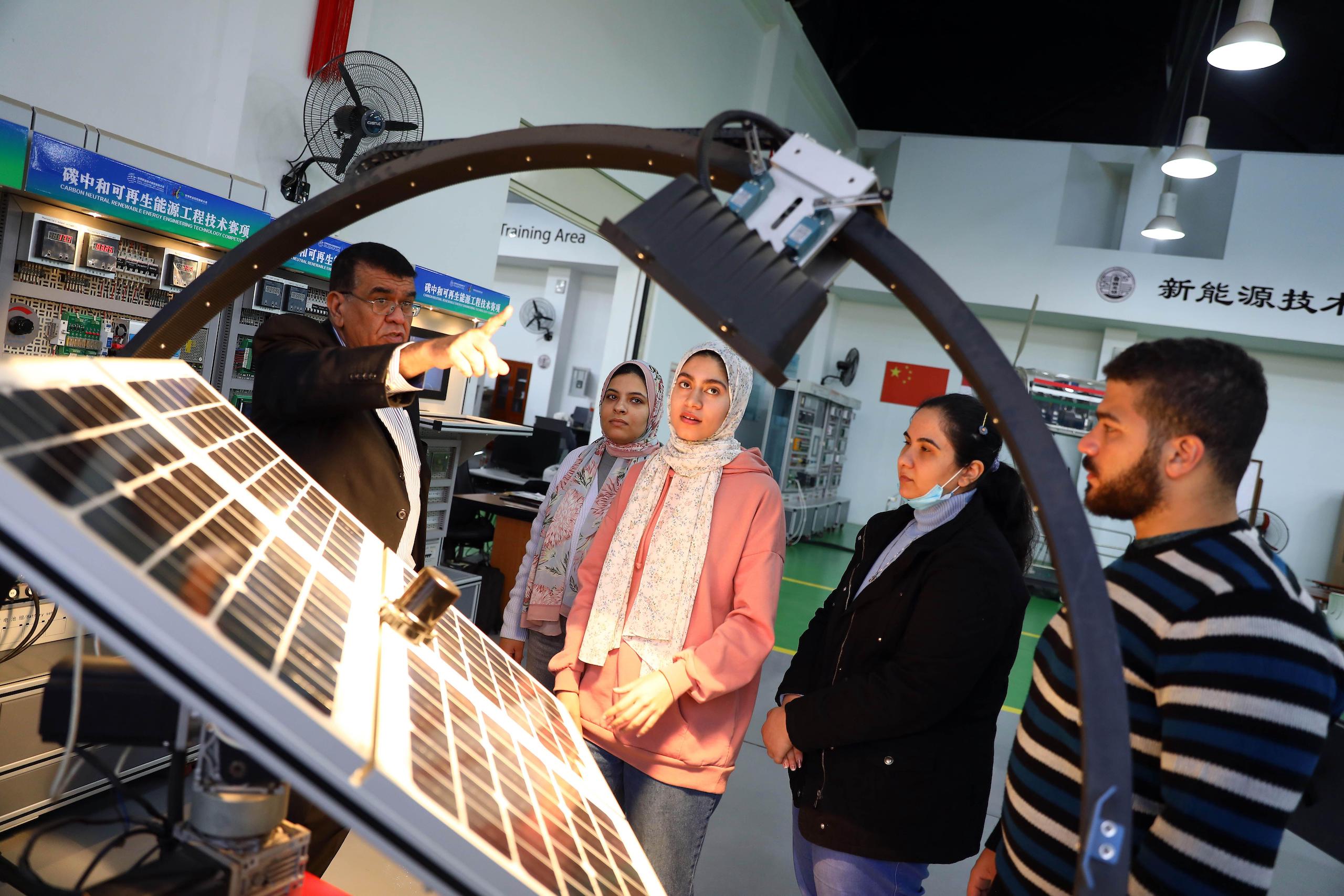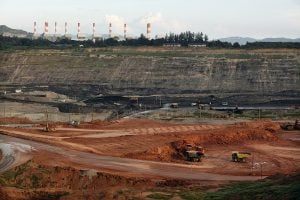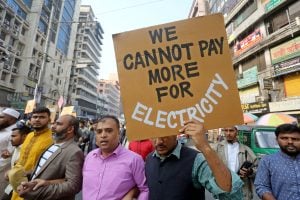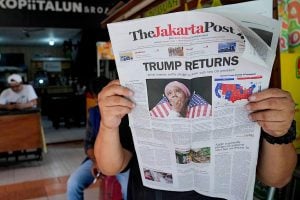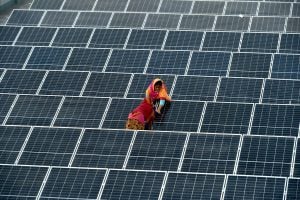“Overcapacity” is a word that has dominated the global political agenda this year. In an April visit to China, US Treasury Secretary Janet Yellen raised – both privately and publicly – the Chinese economy’s “imbalances and overcapacity”. Yellen expressed worries that this overcapacity could harm US industries. A particular focus of attention on the overcapacity debate has been China’s “new three” sectors of solar power, electric vehicles (EVs) and lithium batteries – products that are also central to China’s and the world’s low-carbon energy transition.
Analysts say that EVs are expected to face a further setback under the second term of US president-elect Donald Trump, whose transition team is planning to cut EV tax credits and further increase tariffs on Chinese goods.
But not everyone agrees with the characterisation of these sectors as experiencing overcapacity. And not everyone thinks these “imbalances” are a bad thing. Some argue China’s huge production capacity in low-carbon sectors could offer a unique opportunity to accelerate the global energy transition, particularly in the Global South.
Understanding overcapacity
Simply put, overcapacity occurs when a sector’s production exceeds market demand. This imbalance can lead to lower-priced exports and unfair trade. It has implications for companies in other countries, which may be forced to downscale or close if outcompeted by low-priced goods, leading to job losses.
The US and EU have cited these negative consequences as a justification for the tariffs they have imposed on China’s “new three” goods. In May, the US announced trade tariffs of 100% on Chinese-manufactured EVs, 25% on lithium-ion batteries and 50% on solar cells. In July, the EU announced similar measures on Chinese EVs, a measure formalised at the beginning of October with tariffs of up to 45%.
US and European officials also point to what they call “unfair” subsidies from the Chinese government that have boosted the country’s production and global competitiveness. According to an April report by the Kiel Institute, subsidies for green tech companies in China surged in 2022, with EV giant BYD receiving EUR 2.1 billion – nearly 10 times the EUR 220 million provided two years earlier.
According to the International Energy Agency (IEA), China is responsible for three quarters of all lithium-ion battery production, which is crucial in the manufacturing of EV cars. China also produces over 80% of the world’s solar panels, with exports increasing by 34% in the first half of 2023.
President Xi Jinping remarked at a China-France-EU trilateral meeting in May that there is “no such thing as ‘China’s overcapacity problem’”. Meanwhile, Chinese economist Chen Yuyu attributes the imbalance more to “weak economic cyclical demand” than excess supply.
Both Chinese and global demand for low-carbon technology is expected to experience a boom in the coming decades. The IEA predicts that by 2030, based on government targets and pledges that go beyond existing policies, global EV sales will hit 45 million units, which would more than triple the number of new EVs seen in 2023.
Similarly, global demand for solar photovoltaic system components and batteries is forecasted to expand rapidly over the coming decades. China has set ambitious targets for solar power as part of its decarbonisation goals. A 2023 Global Energy Monitor report notes that China could double current levels of solar capacity and meet its 2030 target of 1,200 gigawatts (GW) by 2025. Globally, wind and solar energy are expected to more than double their share of global electricity generation, from 12% in 2023 to 30% in 2030, according to an IEA forecast.
That said, the Chinese renewable sector is suffering from an imbalance of supply and demand, which is driving down profits at precipitous rates. Industry conversations have been increasingly dominated by the need to control production.
The view from the Global South
The debate on overcapacity in the three green sectors does not only concern China and the West, but also the Global South, particularly Africa, where some experts view the overcapacity issue differently. Frangton Chiyemura, a researcher specialising in political and economic developments in the Global South at the Open University, tells Dialogue Earth that Africa can help China alleviate the “overcapacity” by connecting demand with supply. While the African market is relatively small for now, cooperation between China and Africa in technological innovation can expand markets for Chinese new energy goods, he says.
One way in which some of China’s “overcapacity” in the green energy sector is being absorbed is by expanding exports directly to Global South countries. Pakistan, for example, imported 13 GW of solar photovoltaic capacity with lower cost from China in the first six months of the year. South Africa is experiencing the largest growth in imports of Chinese solar panels into Africa, having imported 4 GW of solar panels in the year up to September 2023, capable of producing electricity equivalent to about 3% of its annual demand, according to a report from think-tank Ember.
Renewable energy production in Africa is low compared to other regions of the world. The whole continent generates just 13 GW of electricity from solar panels – a far smaller capacity than many individual countries worldwide. Chiyemura says China could consider relocating some of its production lines to Africa, pointing to African economies’ relatively high levels of market access to the US and Europe.
“Many African countries have favourable trade agreements with Europe and the US, with limited tariffs,” he notes. “If China and some African countries consider the possibility of producing products such as solar photovoltaic systems or wind turbines in African countries… some of the products would be consumed in the local market, but the majority of the products would be targeted at foreign markets.”
He adds that African countries have many tax exemption agreements with EU and US markets. The African Growth and Opportunity Act, for example, offers duty-free access to the US market for more than 1,800 products from eligible sub-Saharan African countries.
The head of the Africa Finance Corporation, Samaila Zubairu, has also proposed that China counter the overcapacity narrative by collaborating with Africa to diversify its renewable-energy supply chain.
The establishment of renewable energy manufacturing capacity in Africa would also dovetail with African economic objectives to develop manufacturing and increase value add on the continent, as seen in policies like Rwanda’s National Strategy for Transformation.
Muyi Yang, a senior researcher at the independent energy think-tank Ember, believes that diversifying supply chains will also benefit China in the long term. As resource constraints grow, transferring industries to resource-rich regions will be more sustainable, he says.
Connecting the dots
While there is a clear potential alignment of China’s production and Africa’s needs and vision, action will be needed to capitalise on the opportunities.
Yang said the biggest one relates to the lack of infrastructure deployment in African countries and the poor investment environment in local markets, in which foreign investors are hesitant to enter the local market, and where most of the countries are dominated by public utilities. “The public sector is unable to support enough new energy projects and the private sector is reluctant to invest, making it difficult to get projects off the ground.”
The Forum on China-Africa Cooperation (FOCAC) held in September showed some positive signals, including a pledge to “[provide] African countries with new energy technologies and products, implement 30 clean energy and green development projects, and set up a special fund for the China-Africa green industry chain”. The Beijing Action Plan, a blueprint for the next three years of China-Africa relations adopted at FOCAC, also affirmed that the country would “[support] Africa in developing local value chains, manufacturing and deep processing of critical minerals, build growth circles for China-Africa industrial cooperation in five regions, undertake 10 supporting projects of industrial parks for African countries, and hold 100 training sessions on industrialisation”.
Chiyemura sees these indications as a positive step. “The signal from the Chinese leadership is that we are going to set up some policy instruments to support green industrialisation in Africa [and] is a step in the right direction. The signalling effect means that Chinese companies operating in Africa, whether private or state-owned, are likely to shift their commitments towards greener renewable energy projects.”
Fikayo Akeredolu, a researcher on the political economy of Nigeria’s energy transition at the University of Oxford, says she favours technology transfer and business investment from investors over economic aid. She notes that technological developments can bring more dynamism and incentives to new energy development and mean that African countries would play an active role in world politics.
Meanwhile, Huang Yiping, dean of the Institute of South-South Cooperation and Development at Peking University, has suggested that the Chinese government should implement the equivalent of a Marshall Plan for low-carbon products. The “Green Development Plan for the Global South”, as he calls it, would provide financial support for Global South countries to buy Chinese low-carbon goods, stimulating demand for Chinese manufacturers’ products and supporting green transformation and economic development around the world. He noted that it could, like the Marshall Plan, create a positive cycle of “benefiting others while benefiting oneself”.
For the Global South, China’s “overcapacity” can be seen as an opportunity for an energy transition, especially when much can still be done to achieve climate goals. But how China fosters South-South cooperation to enable it to continue exports of new energy products to EU and US markets will be critical, be it through building factories, ramping up technology transfer or supporting new energy industry growth in Africa and Southeast Asia.


